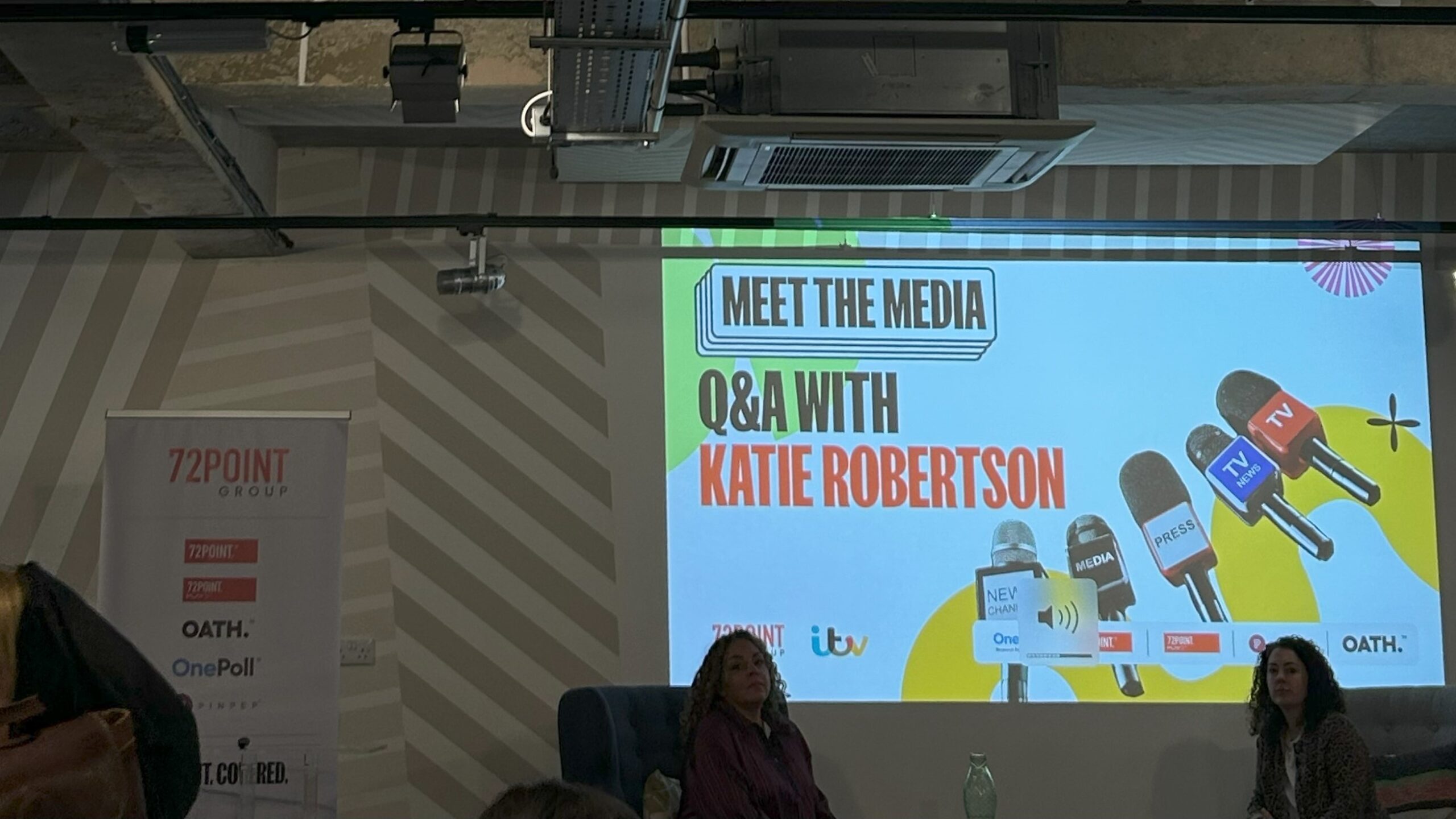4 steps to help you measure social media success


If you’ve been keeping track of our recent blog posts on the social platforms that will help you succeed in reaching new customers (and those that won’t), you’re likely well on your way to creating a winning social strategy.
Utilising these tools is all well and good. Still, it’s a wasted effort if you’ve not put in the time to measure your social output, track what is or isn’t working, and visualise how social is performing against, or in harmony with, your other channels.
You can spend hours and hours tweaking tweets, crafting campaigns, and fine-tuning your Facebook ads, but without clear measurements that align with business goals, you’ll struggle to determine what success looks like or gauge that all-important ROI.
But fear not – in this post we’ll be walking you through four steps to master your social media analytics, keeping you on track as you supercharge your socials.
Step 1: Define your goals
Before you do anything else – before you even create your social profiles, if you haven’t already – you need to know what you’re trying to achieve. Sure, you want to boost sales, but what are the stepping-stone goals that will help you do that? Do you want to improve your customer experience? Learn more about your audience? Get more people looking at your website? It’s likely that when you give it some thought, you’ll realise there are multiple goals you want to work towards through social media.
All roads likely lead to a desired increase in sales, but the additional social goals you set will have a huge impact on how you move forward with your social media strategy.
If a better customer experience and, therefore, happier customers who are more likely to come back for repeat sales is your priority, tailor your strategy to deliver this customer satisfaction. For instance, you could run live Q&As, increase your transparency on your social platforms, and shout about all the good things your business does that fly under the radar.
If an uptick in followers is what you’re after, focus on providing valuable, engaging content that your target audience can’t help but stick around for. Interesting reels, beautiful imagery and insights could all do the trick here.
Telling yourself you want to ‘go viral’ is vague, unrealistic, and almost impossible to tie any real measurements to. By going granular with your goals, you’ll have a much better roadmap to success.
Step 2: Choose metrics that matter
Once you have a clear vision of what you’re trying to achieve, the next step is to identify which metrics you should be measuring to keep you on track.
There are countless ways to monitor your social progress depending on your unique goals, but the following will help you see cold numerical success in almost every strategy:
Click-through
Clicks clearly show if your community is intrigued by the content you’re putting out there. With the right tools, you can track your users’ journey from a post on one of your social channels to your website, downloadable content, event signups and more.
Monitoring this kind of interaction with your content is a great way to spot and fix any issues. If, for example, your upcoming event is getting significantly fewer clicks than your other content, or users are clicking through but they’re leaving the page pretty quickly from there, you know there’s a problem. In this example, you’ll need to either reimagine your event and why it’s not resonating, or pay more attention to the event landing page and ask yourself why it’s cutting the customer journey short.
Engagement
Clicks aren’t the only metrics that count. By tracking likes, comments, retweets and shares, you’ll get a good idea of how much engagement your social posts are receiving. Monitoring this over time helps you understand whether your content is hitting the mark and what your customers do or don’t like about your posts, products, or other services. It also helps you figure out when is best to post (driven by when your audience is online and most engaged) and how best to craft that post and its content.
It’s easy to look at accounts with huge follower bases and assume they’re the ones to emulate. However, a highly engaged smaller audience is far more beneficial than a big group of people who don’t react at all to what you’re posting. By keeping a close eye on engagement, you can make certain you’re connecting with people who really care about your business.
Share of voice
Share of voice isn’t only important when it comes to Google search results and ad campaigns; it’s an important metric on social media too.
To calculate your share of voice, divide your brand’s measures by the total market measures. This could be your mentions on social media, click-through from paid advertising, or website traffic from a social platform.
Next, by comparing your results with competitors, you can start to understand where you rank against them, how much you’re mentioned comparatively, and how positive your overall share of voice is.
If a particular competitor is outperforming you, take the time to understand what they’re doing better and why they’re succeeding, and tailor your strategy to follow in their steps. HubSpot have a handy guide to share of voice, which you can read here.
Step 3: Compare and contrast
It’s likely that social media isn’t the only way you’re trying to reach your customers. If you are also targeting them with email campaigns, SEO, PPC and even traditional press-based PR, you’re missing a trick if all these activities are being kept separate.
You may be pleasantly surprised by the bigger picture that reveals itself when you take a step back and see these siloed streams as one. In fact, these separate marketing streams can help inform each other.
By assessing each activity and the impact it’s having on the others, you will be able to see how they interweave, where one is enforcing the other, and spot seemingly obvious pain points that you wouldn’t have otherwise noticed. Suddenly you’ll be able to ask yourself why one link is garnering far more clicks on social than it is on email, or you may see a clear appetite for a specific type of content across all outputs.
The end result of this process is that you will gain a far better understanding of how your customers engage with your content. This will help you create better, more targeted content in the future. It sounds simple, but you’d be amazed by how many businesses fail to track social success as part of a wider marketing strategy.
Step 4: Don’t be content with your content
Your social strategy is only as good as the content it’s delivering. The right content makes your metrics tick in the right direction, letting you know that you’re on track to reach your goals. So, if your content isn’t performing, don’t be afraid to go back to the drawing board.
Your CEO may be a bottomless wealth of knowledge, but if the 4,000-word thought pieces she insists on writing each month are putting your followers to sleep, reimagine how this expertise can be reimagined – maybe with imagery or short-form video. Or, if your video content generates spikes in your engagement but it isn’t a priority, maybe it should be.
By getting better and more consistent with social media monitoring, you’ll form a clear picture of what works best for your business. From there, you can stop wasting time and energy on content that doesn’t convert and instead focus on giving the people what they want.
Continue reading

Ding Dong! It’s June 2025
June came with a lot of heat, both from the weather and from our exciting client updates, ranging from launch events to heartfelt campaigns and you can find out all about it in this month’s Ding Dong! Let’s take a deep dive into this month’s happenings. Starting off on a high with our newest client, … Continued

Here, air and everywhere: reflections from the world’s biggest aircraft interiors conference
Front Door Director, Kath Chadwick, recently jetted over to Hamburg in support of one of our clients – and has returned to tell us all about it. I have just returned from my fourth year at the world’s biggest aircraft interiors conference AIX in Hamburg in April, supporting Front Door Comms’ client Acro Aircraft Seating. … Continued

Ding dong! It’s March 2025
It’s been a little while since we last shared a monthly news update, but we’ve kept you in anticipation long enough. Get back from the edge of your seat and settle in for a lovely round up of all things PR from the team at Front Door Comms. So, what’s been so important that it’s … Continued

Inside the Broadcast Newsroom: PR Insights from 72Point’s Meet the Media
Last week, Front Door Rubie headed off to the big smoke to 72Point’s Meet the Media event, where ITV’s Katie Robertson shared valuable insights into what broadcast journalists are really looking for. From the dos and don’ts of pitching to the best programmes to target, Rubie has rounded up the highlights. Pastries, granola and ginger … Continued

